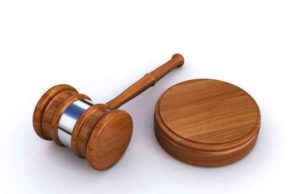
Percentage of Women on Law Reviews Declines Significantly
Law reviews, scholarly journals published by law schools, serve as a platform for legal scholarship and commentary. Among the many challenges faced by law reviews, gender equality in authorship has been of increasing concern. A recent study by the Women in Law Empowerment Forum (WILEF) found that the percentage of women authors on law reviews has declined significantly. In this article, we will explore the findings of the study and discuss potential reasons for this decline.
Findings of the Study
The study conducted by WILEF involved 17 law schools and looked at the authorship gender gap of articles published in their school’s flagship law review over a four-year period. The results of the survey revealed a significant decline in the percentage of women authors. In 2016, 46.8% of authors were women. This percentage declined to 42.5% in 2017, 39.0% in 2018, and 37.1% in 2019.
Reasons for the Decline
Several factors may be contributing to the declining percentage of women authors on law reviews. One factor may be unconscious biases, where editors may be more likely to accept articles from authors who resemble them in terms of gender. Another potential factor is the lack of mentorship opportunities for female law students and young lawyers, as some older male lawyers may be reluctant to mentor women for fear of inappropriate behavior accusations.
Additionally, the demanding nature of legal practice may also be a factor. Many women in the legal profession have cited work-life balance issues and family responsibilities as barriers to submitting articles for publication. Women also tend to take on more pro bono work and may not have the same time as their male counterparts to focus on academic writing.
Impact of the Decline
The decline in the percentage of women authors on law reviews is troubling for several reasons. First, it raises questions about the extent to which the legal profession has advanced in terms of gender equality. Second, law reviews serve as sources of legal knowledge and scholarship. The decline in women authorship may mean that the perspectives of female legal scholars are underrepresented in legal discourse.
Lastly, the decline could impact the career advancement opportunities of female law students and lawyers. Articles published in law reviews can be a critical factor in getting hired, obtaining clerkships, and receiving tenure. Thus, the decreasing percentage of women authors could hinder the career advancement opportunities of female law students and lawyers.
Conclusion
The declining percentage of women authors on law reviews is a concerning trend that requires attention and action. Solutions include raising awareness of unconscious biases in the selection process, providing mentorship opportunities for female law students, and encouraging law firms to promote work-life balance and flexibility in the workplace. By addressing these issues, law reviews can ensure that gender equality is reflected in legal scholarship and discourse, paving the way for a more equitable and inclusive future for the legal profession.
The glass ceiling can take many forms. In some cases, it’s easy to see—when women aren’t allowed into educational institutions, for example, or aren’t given interviews for particular types of jobs. Law schools no longer bar women from entering (in fact, many law schools today now admit a majority female class), but the law remains a profession that often significantly under represents women at its highest levels.
Law reviews are usually considered to be the most prestigious co-curricular activity in most accredited law schools. Being on law review is significantly correlated with higher salaries, more job offers, and more prestigious career tracks after graduation. Recently, Ms. JD, an organization dedicated to helping women enter the practice of law, conducted a survey about law review participation by gender. Their results were surprising, and contained both good and bad news for women currently attending law school.
The study examined only the staff on law reviews for the top 50 law schools as ranked by U.S. News and World Report. Women who are in or considering law school may be glad to know that getting on law review seems to be just about equally likely for men and women—women make up about 47 percent of total law school graduates and about 42 percent of law review staff members at schools in the top 50.
However, the coveted role of the editor in chief can open new career possibilities, and it’s here where women seem to be shut out according to survey results. Just 28 percent of the editors in chief were women—a substantially lower percentage than would be expected from chance alone. What makes this figure even worse news for women is that it represents a significant decrease from two years ago, the last time the survey was conducted.
This pattern of allowing women into the lower levels of legal power and authority, but not letting them become the boss, is surprisingly common across the board in the legal profession. Less than 20 percent of partners at large law firms are women currently, even though women now make up nearly half of the total population of practicing attorneys.
Women have also had a difficult time breaking into the judiciary. Just 27 percent of state and 23 percent of federal judges are women. In academia, the situation is similar to that in the private sector. While women make up a full half of new hires at the assistant professor level according to the AALS Statistical Report on Law Faculty, there are far fewer full professors. Only 20 percent of law school deans today are women.
While the Ms. JD survey only examined law schools that were ranked in the Top 50, other surveys have looked at gender representation on law reviews from lower ranked accredited law schools. These surveys showed greater gender parity in lower tier schools than in the top schools, suggesting that there is still some potential bias against women in the highest levels of legal scholarship and practice.
Source: www.nylslawreview.com, uscourts.gov, aals.org

































